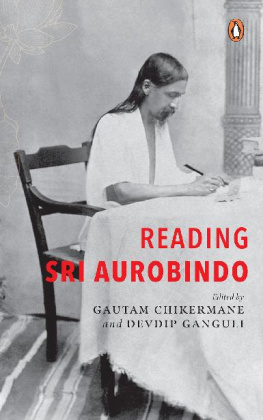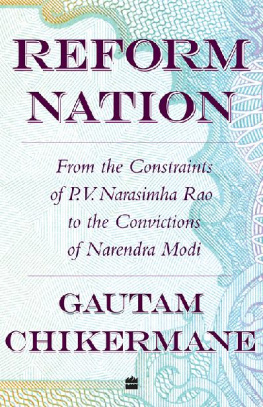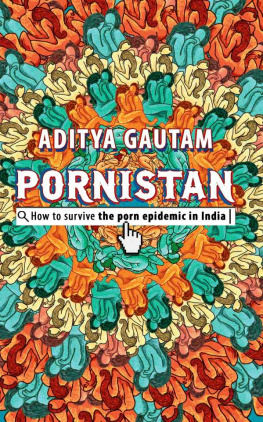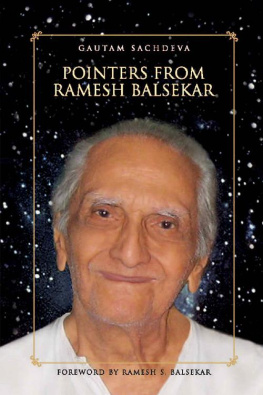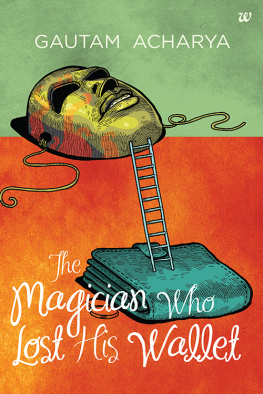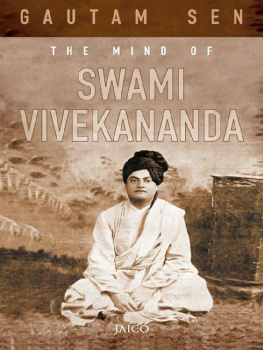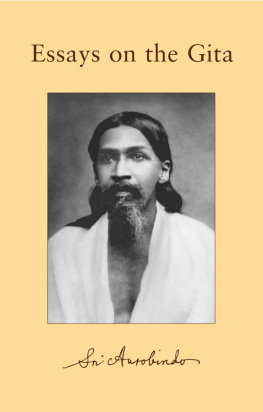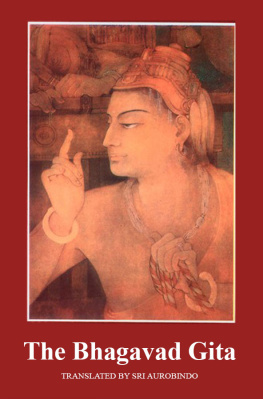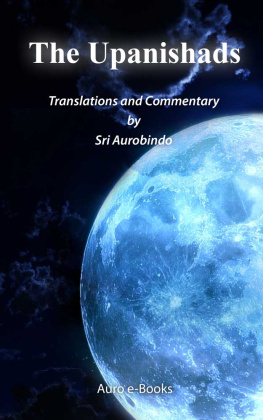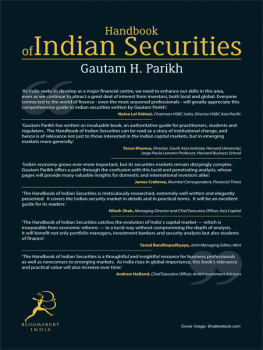READING SRI AUROBINDO
Advance praises for THE BOOK
The most attractive, even unique, feature of this book is that it is a collection of volume-by-volume introductions to Sri Aurobindos Complete Works . Written by the whos who of scholars of Sri Aurobindo and practitioners of his Integral Yoga, this anthology of readings is a fitting tribute to the master on his 150th anniversary, which also coincides with India@75Makarand R. Paranjape, MA, PhD (Illinois), and professor of English, Jawaharlal Nehru University
Sri Aurobindos 150th birth anniversary falls on 15 August 2022. One of the worlds greatest philosophers, his voluminous writings collected in thirty-six volumes, represent a massive contribution to the wisdom of humanity. I congratulate the editors of Reading Sri Aurobindo for having produced a collection of perceptive essays by scholars of Sri Aurobindo and practitioners of his Integral Yoga. This is a brilliantly encapsulated introduction to the work of a truly great genius whose writings, including poems, cover a vast canvas of political, sociological and spiritual areas that reflect his integral approach to the individual and collective challenges faced by humanityDr Karan Singh, former member of the 16th Lok Sabha
This book fills a huge vacuum; in that it brings together, for the first time, in one volume the kernel and essence of Sri Aurobindos ideas in an original rendering. What I find remarkable is that it makes Sri Aurobindo accessible to the first-time reader while retaining the subtle depth, richness and complexity of his manifold vision and work. The editors and scholars have done a fine workAmeeta Mehra, chairperson and founder-trustee of The Gnostic Centre
The modern rishi Sri Aurobindo has been critical to the revival of Dharma in the modern day. Most have heard of him, but many would not have read his works. The thirty-six volumes are a daunting task for any lay reader. That is what makes Gautam and Devdips book so important, helping more people access the profound thoughts of Sri Aurobindo. Few understand completely the scholarship of this multifaceted Indian sage whose writings on politics, scriptures and human evolution are transforming those who have internalized them. His writings show a new pathway to understanding the transitional nature of this creation called the universe in general and its human factor in particular. Reading Sri Aurobindo is the ideal introduction to those who want to access Sri Aurobindos works but dont know where to begin their journey from the thirty-six volumes he has writtenAmish Tripathi, author
GAUTAM CHIKERMANE and DEVDIP GANGULI
READING SRI AUROBINDO
Edited by
GAUTAM CHIKERMANE
and DEVDIP GANGULI
To Sri Aurobindo and the Mother
Contents
Introduction: The Supramental Sage
Gautam Chikermane
My meeting with Sri Aurobindo began on the mental plane, through abstract ideas that explored the various aspects of Indian spiritual and philosophical traditions. I already had a working knowledge of the concepts, partly as a seeker and partly as a traveller, through the works and paths of other Indian philosophers and spiritual leaders to whom I was exposed to during my school days, college life and early career as a writer. It was not until I turned thirty that destiny placed me before Sri Aurobindo. More accurately, I was ready to receive his deep, wide and puissant ideas. This was no coincidence; it was the decisive tread of time that has irreversibly changed my life.
Since then, I have embarked on a journey that has gone beyond the mental. Or let us say, the mental has been enriched by the emotional-vital, which in turn has been deepened by the psychic, with all three held together by the spiritual. Sri Aurobindos influence on every aspect of my life, from the way I think to the manner in which I express myself, has been, like his yoga, integral.
The Integral Yoga is a process by which not just the soul but the body, right down to the cells, is transformed through the union of two powerful forcesthe human aspiration from below, and the divine grace from above. There is no single method, mantra, practice or process that the Integral Yoga professes; the journey and the resultant transformation of each individual soul is unique.
This transformation is destined. The Integral Yoga, according to Sri Aurobindo, accelerates what nature has preordained through evolution. To clarify, the Integral Yoga is not an admixture of Karma Yoga, Bhakti Yoga or Jnana Yoga (the yogas of Works, Devotion, and Knowledge). It is not a collection of ideas and words fused together by language. Sri Aurobindos synthesis of yogas is wider than an agglomeration of extant schools, deeper than the living philosophical traditions and higher than the spiritual milestones mapped thus far. It is not an easy path. It requires grit, sincerity and the constant fire of aspiration.
The Integral Yoga begins where other yogas end. For Sri Aurobindo, dissolving into the Brahman is not the ultimate spiritual goal. His yoga attempts to transform the earth. Where other yoga paths find fruition in merging with the Absolute, Sri Aurobindo sees this union as an intermediate step. Divinisation of matter and not dissolution of consciousness is his destination, the transformation of humanity and not merely the individual his aim. Science may place homo sapiens at the pinnacle of evolution. But for Sri Aurobindo, this species is a transitional being, whose evolution is not yet over. Just as life entered matter, and mind entered life, both mind and matter await the descent of the spiritthe Supramental consciousness. Any transformation without the transformation of the body will remain incomplete. Life on earth has to be divinised. Life and afterlife are both here and now. The two are one.
Sri Aurobindo does not believe in salvation, his spiritual collaborator Mirra Alfassa, better known as the Mother, said. For us salvation is a meaningless word. Although his work is rooted in Hindu philosophyor to put it more accurately, in Sanatana Dharma, itself a wide spiritual rather than a narrow religious endeavour, and where even religious activities such as rituals have deeper meaningsthrough the Integral Yoga, Sri Aurobindo has taken Indian spiritual traditions several steps forward.
But neither the divinisation of matter, nor the transfer of consciousness, transformation and evolution, nor aspiration and grace are easy concepts to understand. Sri Aurobindo came upon earth to teach this truth to men, wrote the Mother, combining all three concepts (man as a transitional being, the Supramental consciousness, and the transformation) elegantly. He told them that man is only a transitional being living in a mental consciousness, but with the possibility of acquiring a new consciousness, the Truth-consciousness, and capable of living a life perfectly harmonious, good and beautiful, happy and fully conscious. During the whole of his life upon earth, Sri Aurobindo gave all his time to establish in himself this consciousness he called supramental, and to help those gathered around him to realise it.
Despite the wide range of themes he engaged with, the essence of Sri Aurobindos writings remained spiritual. Be it nationalism or freedom, poetry or drama, analysis or record, the Vedas or the Upanishads, science or metaphysics, all his writings are rooted in spirituality. What makes reading Sri Aurobindo challenging is the interpretations of ideas like surrender, equanimity or grace, when placed within the wider context of the Integral Yoga. Making the intellectual climb even steeper are other related ideas that we meet on the pathman as a divine potential, containing within himself a swabhava that translates into his swadharma to surpass matter, mind and soul. Add to this the layers of the being, the knowledge universes from the physical mind to the Overmind, or the ascent of consciousness meeting the descent of grace, and every book of Sri Aurobindo becomes a self-contained force-field comprising a highly-specialized interplay of understandings, experiences and realizations. You cant read Sri Aurobindo only with the eyes of the mind. Even the reading has to be integral. The spiritual collaboration of the vital, the psychic and the physical is necessary to reach the depths he envisions. When some readers say they sense a presence while reading his works, we can empathise with what is going on behind the mind.



